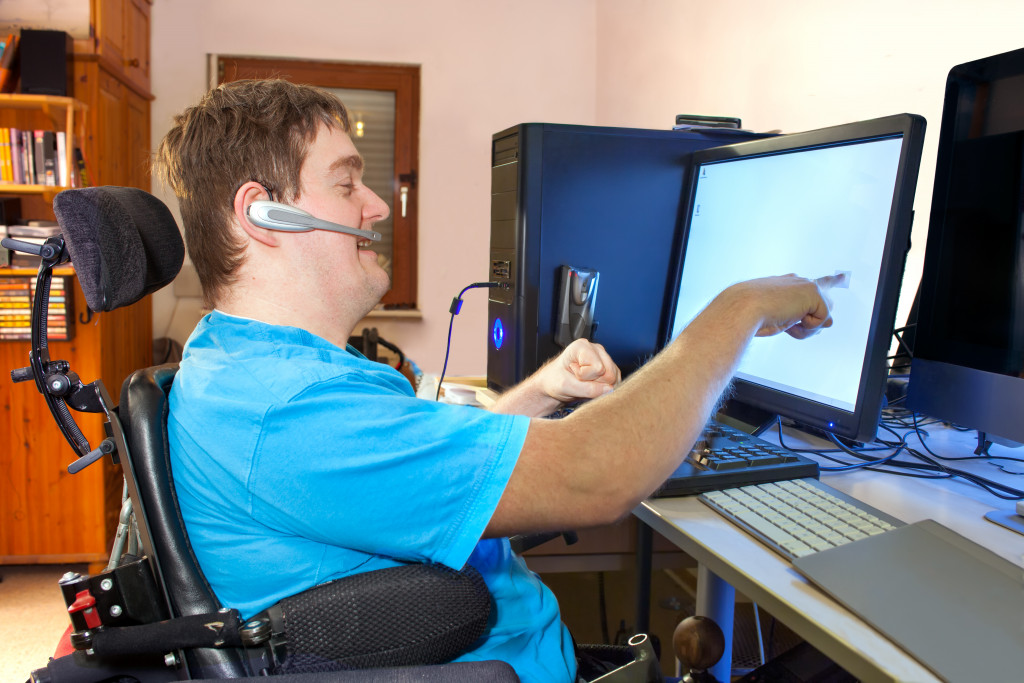- Screen readers help people with disabilities access digital content through audio or braille output.
- Individuals with disabilities can access technology independently using magnification tools and screen enlargers, making digital content easier to see and access.
- Thanks to speech recognition software, individuals can control their electronic devices and interact with the digital world using spoken commands.
- Text-to-speech solutions allow individuals who are deaf or blind to receive information through spoken language.
Individuals with disabilities can benefit from using technology to help them overcome barriers and access opportunities. Technology can enable people with disabilities to participate more fully in society, giving them greater independence and control over their lives.
In recent years, there has been a surge in the development of top technologies designed specifically for individuals with disabilities. By utilizing these tools and adapting existing technologies to suit individual needs better, disabled individuals are presented with various options for enhancing accessibility for everyday tasks.
Software Solutions
Various software solutions are specifically designed to help individuals with disabilities interact and engage with their environment more easily. Here are some of the most common software solutions:
Modern Computer Software for the Hearing-Impaired
Modern computer software for the hearing-impaired is an important technology that has revolutionized accessibility for individuals with hearing disabilities. This software has been designed specifically for those who are deaf or hard of hearing, and its purpose is to help them communicate effectively and efficiently in a world where hearing is a prerequisite for many activities.
Due to its ease of use, the software has been a game-changer for the hearing-impaired, allowing them to easily access digital content, communicate with others, and transcribe speech. Perhaps most importantly, this technology has contributed significantly to breaking down communication barriers and promoting inclusivity for those who are deaf or hard of hearing in a digital age.
Screen Readers
Screen readers are an essential tool for improving the accessibility of digital content for individuals with disabilities. These assistive technologies enable users to “read” the content on their screens through audio or braille output, thereby enhancing access to a wide range of digital materials such as websites, applications, educational materials, and more. The significance of such tools can hardly be overstated, as it empowers thousands of individuals to independently access digital content without requiring extensive technical help.
More significantly, screen readers ensure that individuals with disabilities have equal access to technology and the information age, thus mitigating the disparities experienced by such persons in all facets of life. Indeed, screen readers have become increasingly prevalent as more organizations strive to increase the accessibility of technological solutions.
Magnification Tools and Screen Enlargers

Magnification tools and screen enlargers have become crucial in enhancing accessibility for individuals with disabilities. These tools enable users to see and read content displayed on their screens easily, thus improving their user experience.
The importance of these tools cannot be overstated, as they serve as a means to bridge the digital divide that the disabled community often encounters due to inaccessible devices and platforms.
As society undergoes digital transformation, the need for accessibility cannot be ignored. Magnification tools and screen enlargers provide a viable solution to make technology and communication more accessible, ensuring a more inclusive and equitable society for everyone.
Speech Recognition Software
Speech recognition software has become vital for individuals with disabilities seeking to enhance accessibility. This innovative technology, which enables users to control their electronic devices and interact with the digital world through spoken commands, has proven to be an important game-changer.
Its application has extended beyond marginalized communities to the larger population, who face accessibility barriers due to mobility, hand-eye coordination, or cognitive challenges. However, its importance goes beyond the convenience of hands-free device control.
Speech recognition also improves communication and increases user safety while promoting independence. It has become a top technology that focuses on the needs and abilities of every individual, with the potential to revolutionize accessibility and inclusion in different fields.
Text-to-Speech Solutions
Text-to-Speech solutions have emerged as a top technology to enhance accessibility for individuals with disabilities. This technology allows individuals with hearing and visual impairments to access information through voice output.
These solutions are designed to convert written text into spoken words, providing greater independence and flexibility in accessing information. It is important to note that this technology enables individuals to interact more effectively with the world around them, learn new skills, and gain access to a wealth of information.
The widespread use of such solutions has made it possible for a person with disabilities to communicate and learn in an inclusive environment, allowing them to engage with their peers fully. Text-to-speech solutions also provide a range of customization and accessible features, making it easier for people with different types of disabilities to access information.
Hearing Aids and Assistive Listening Devices

For individuals with disabilities, accessibility can be a major challenge. Assistive listening devices provide a solution by enhancing the audio experience and allowing better communication. Hearing aids and assistive listening devices are essential technologies that can bridge the communication gap between people with and without hearing disabilities, making it crucial for them to have access to these devices.
These technologies help individuals with hearing disabilities tackle everyday challenges in the workplace, social settings, or educational environments. They enable individuals to enjoy and participate in otherwise impossible activities. Therefore, it’s important to realize the significance of hearing aids and assistive listening devices in enhancing accessibility for individuals with hearing disabilities.
These are just some technologies being developed and utilized to improve accessibility for individuals with disabilities. Although there is much left to be done, these technologies are a promising beginning in establishing an inclusive, fair society where everyone can have unrestricted access to technology.






